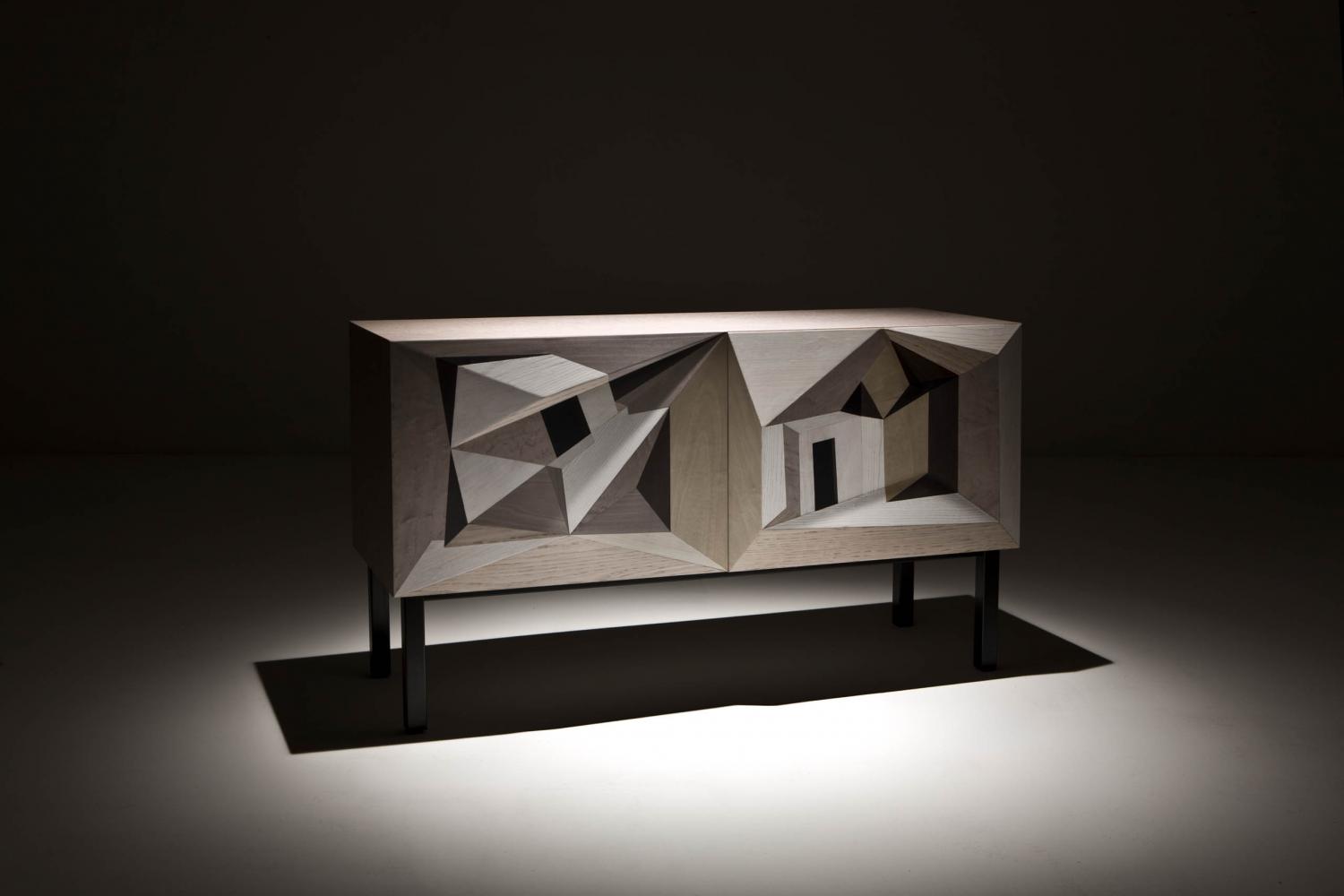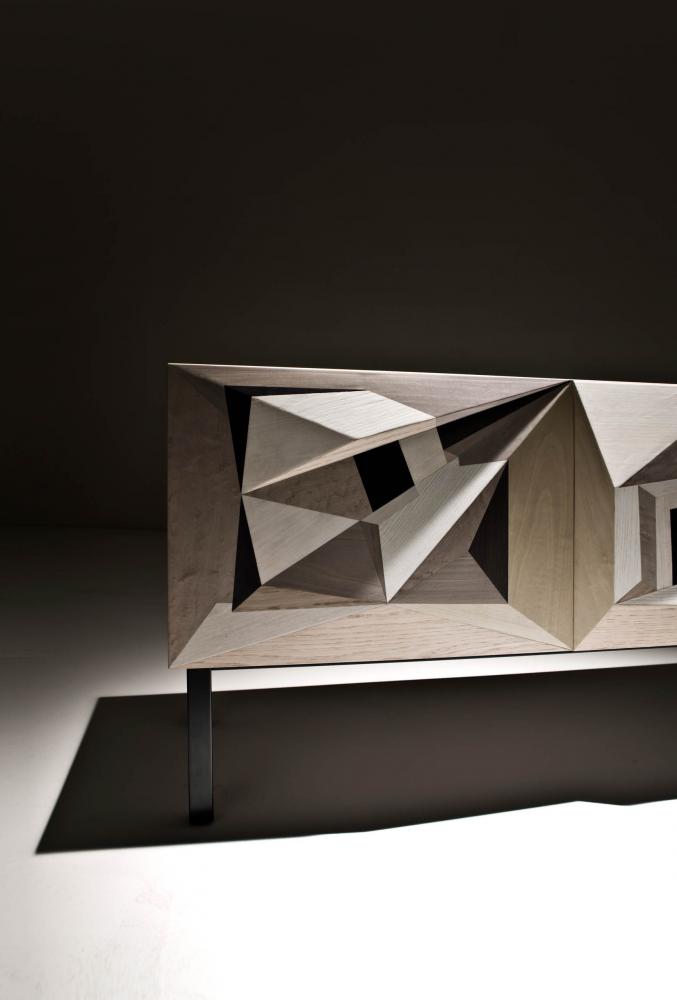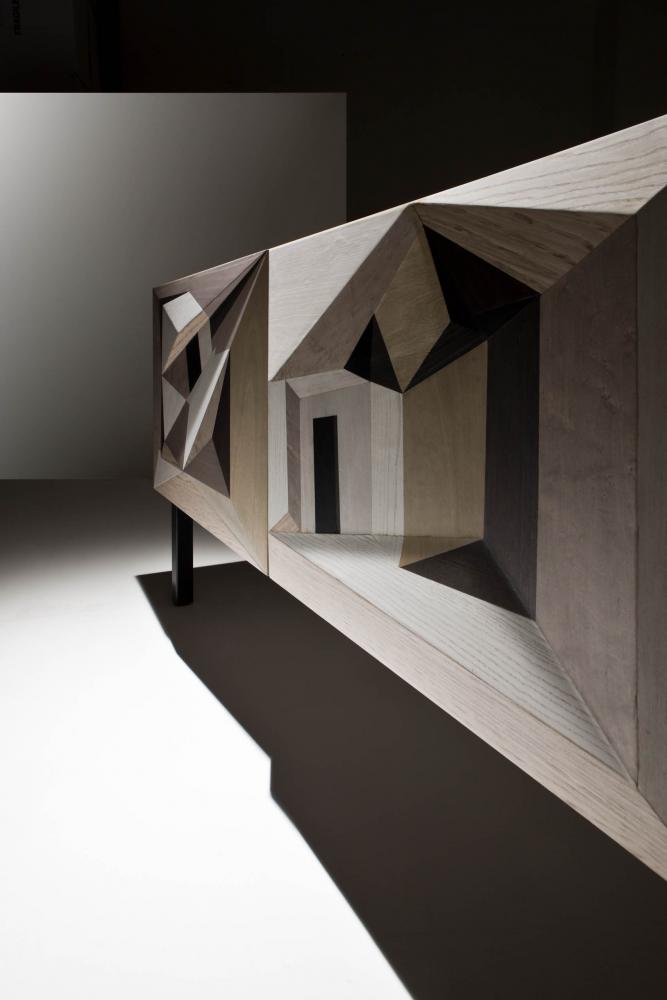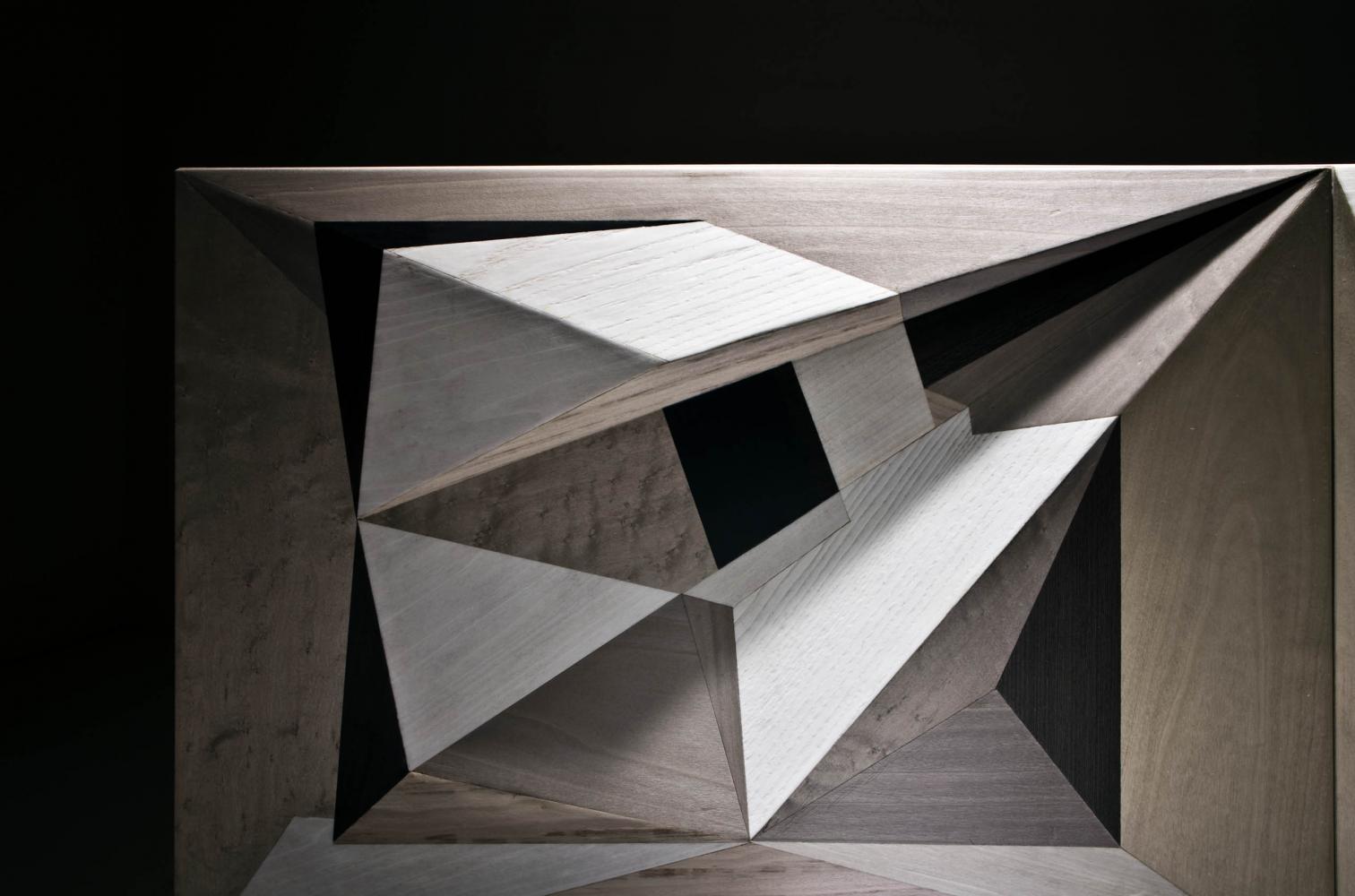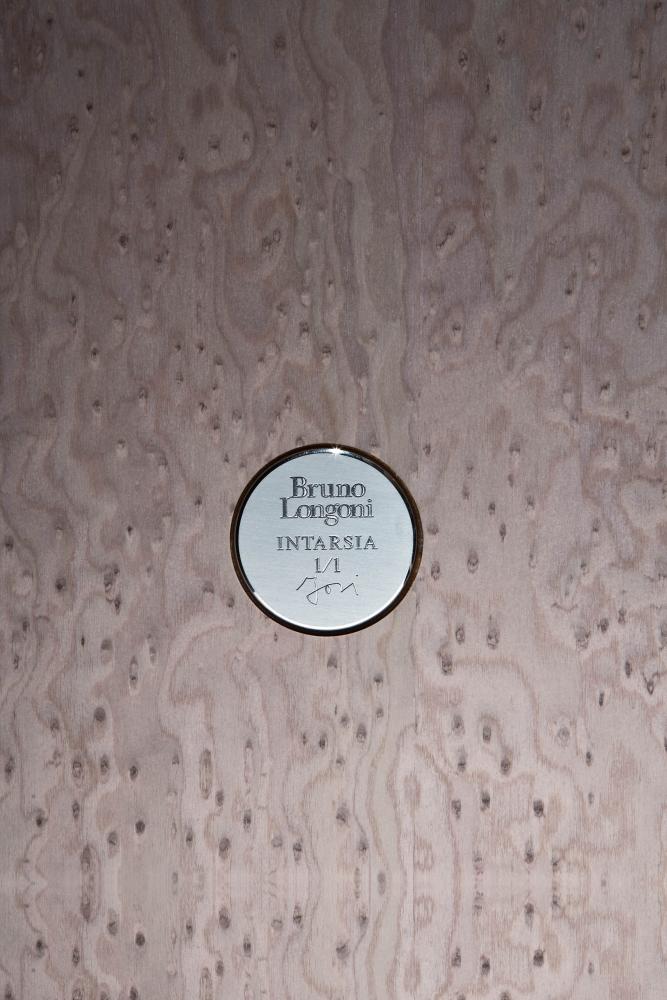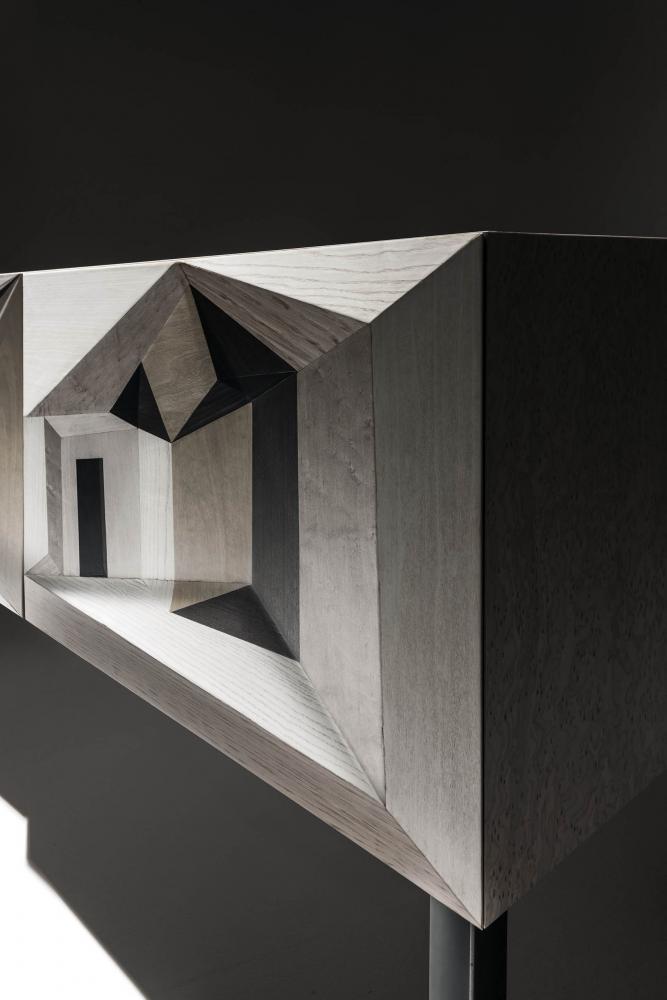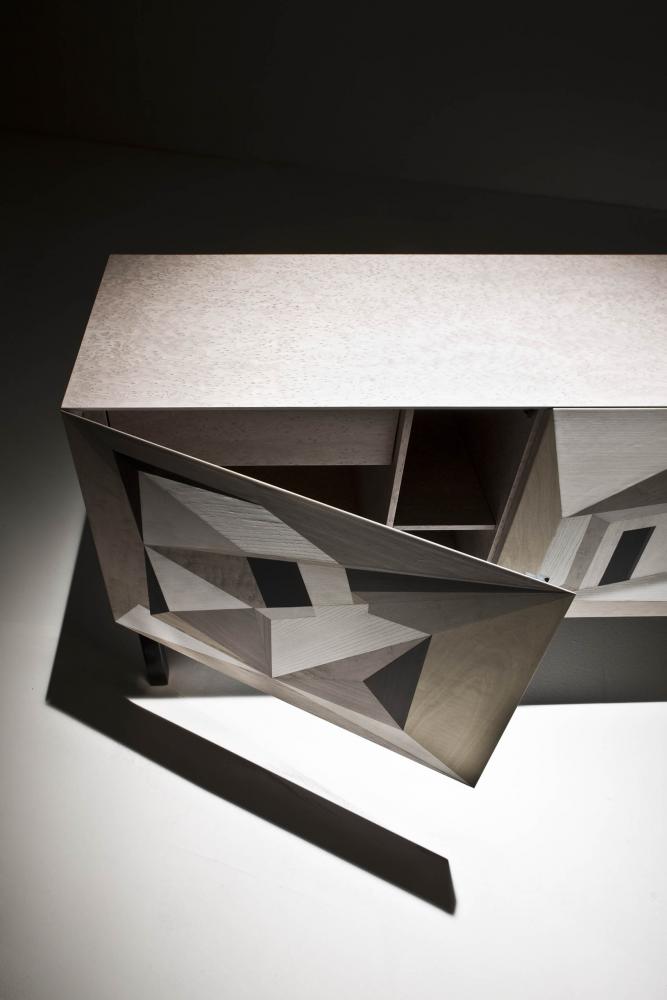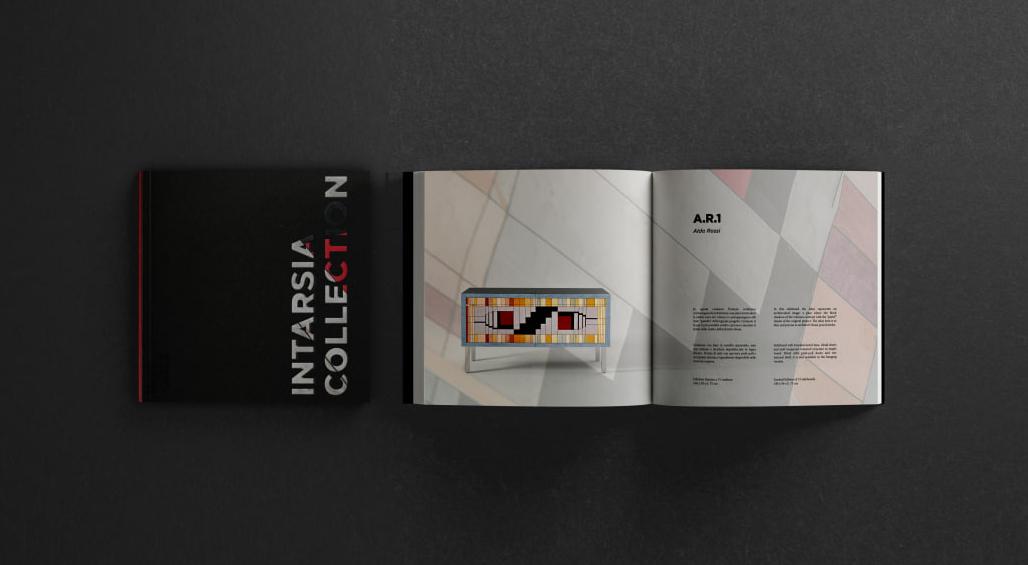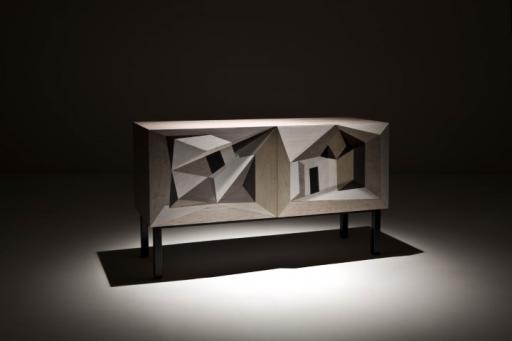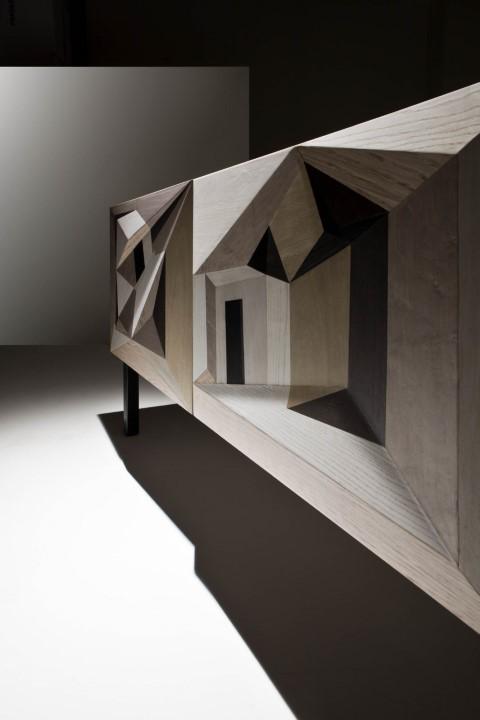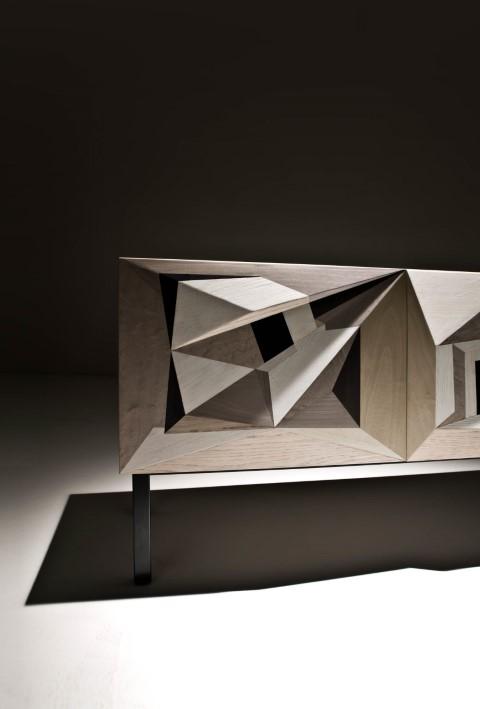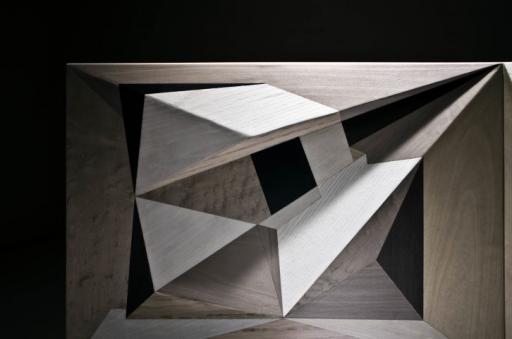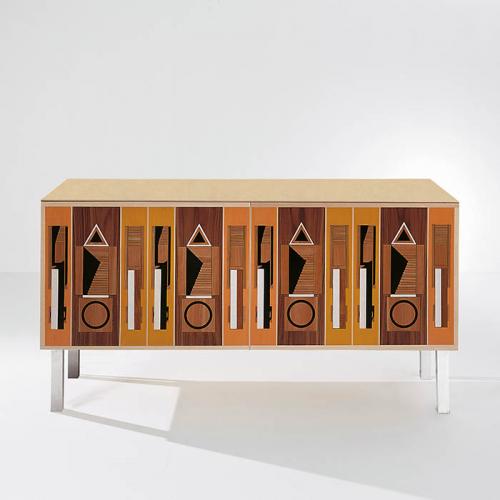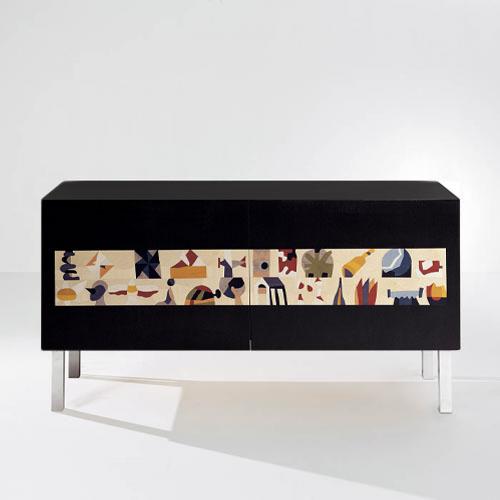TOP
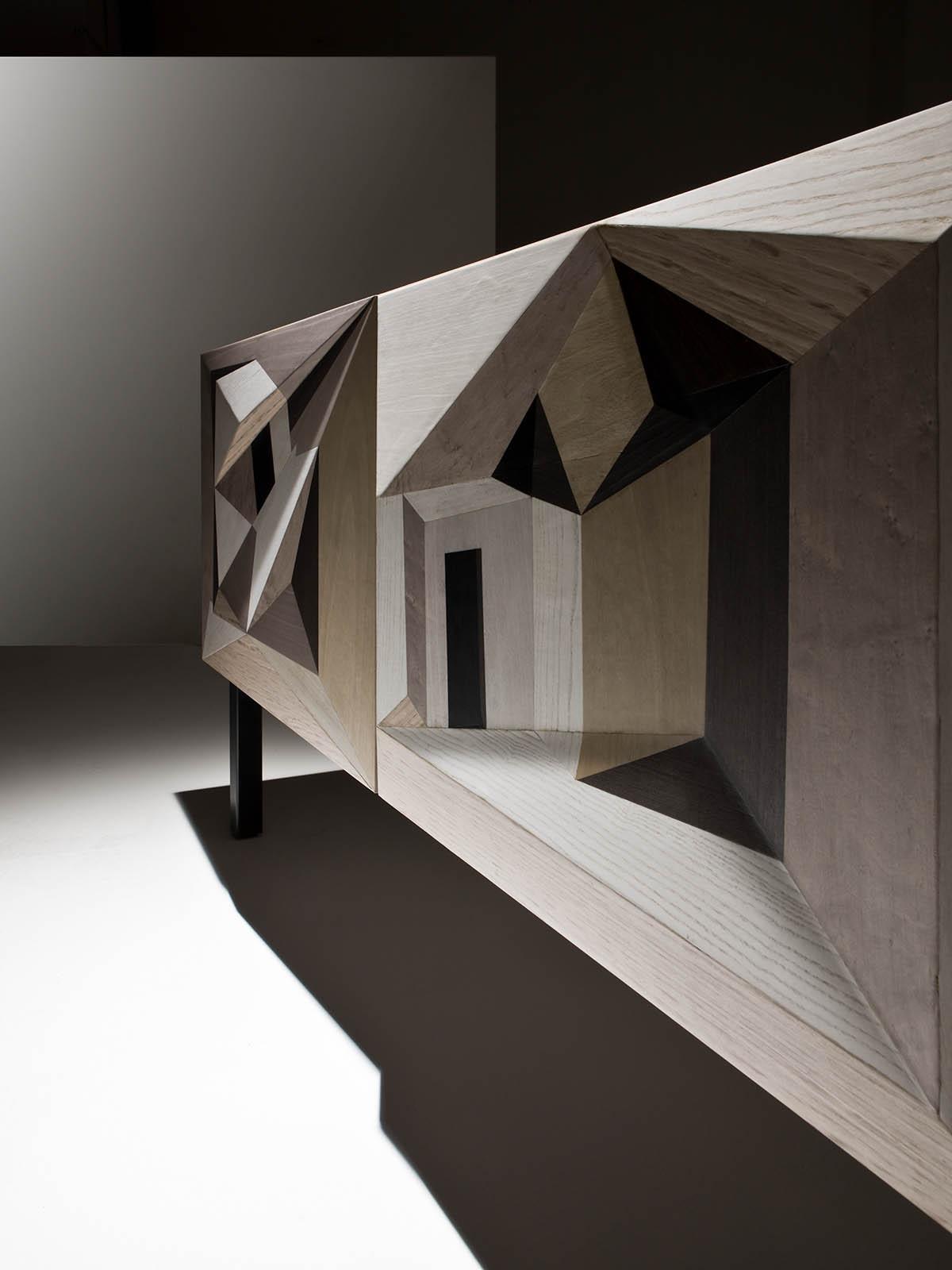


DISCOVER MORE
MORE
The first three-dimensional works by Marcello Jori date back to 1989. They are sculptures - wooden paintings, faceted like crystals, on which the artist, playing with lights and shadows, paints enchanted architectures that multiply and transform according to the light that illuminates them. "Dentro il Paesaggio" represents his first three-dimensional work made with the inlay technique.
Limited edition sideboards that become true pieces of contemporary art
Important artists and designers, such as Aldo Rossi, Emilio Tadini, Bruno Gregori, Hsiao Chin, Robert and Trix Haussmann and Fausta Squatriti created paintings to be reproduced, using the inlay technique, on a sideboard characterized by essential lines. A mosaic created using various types of wood veneers that differ greatly from each other and are patiently matched to reproduce the original painting.
Intarsia Collection revives the local tradition of this ancient technique: a product designed to be reproduced only in numbered specimens, signed, and certified by the author and by the craftsman. The sideboards of the “Intarsia” Collection are design furniture turned into paintings. “Intarsia” represents a direct contact with raw materials which take shape through manual ability and scrupulous dedication, re-invented by imagination and direct experience with wood.
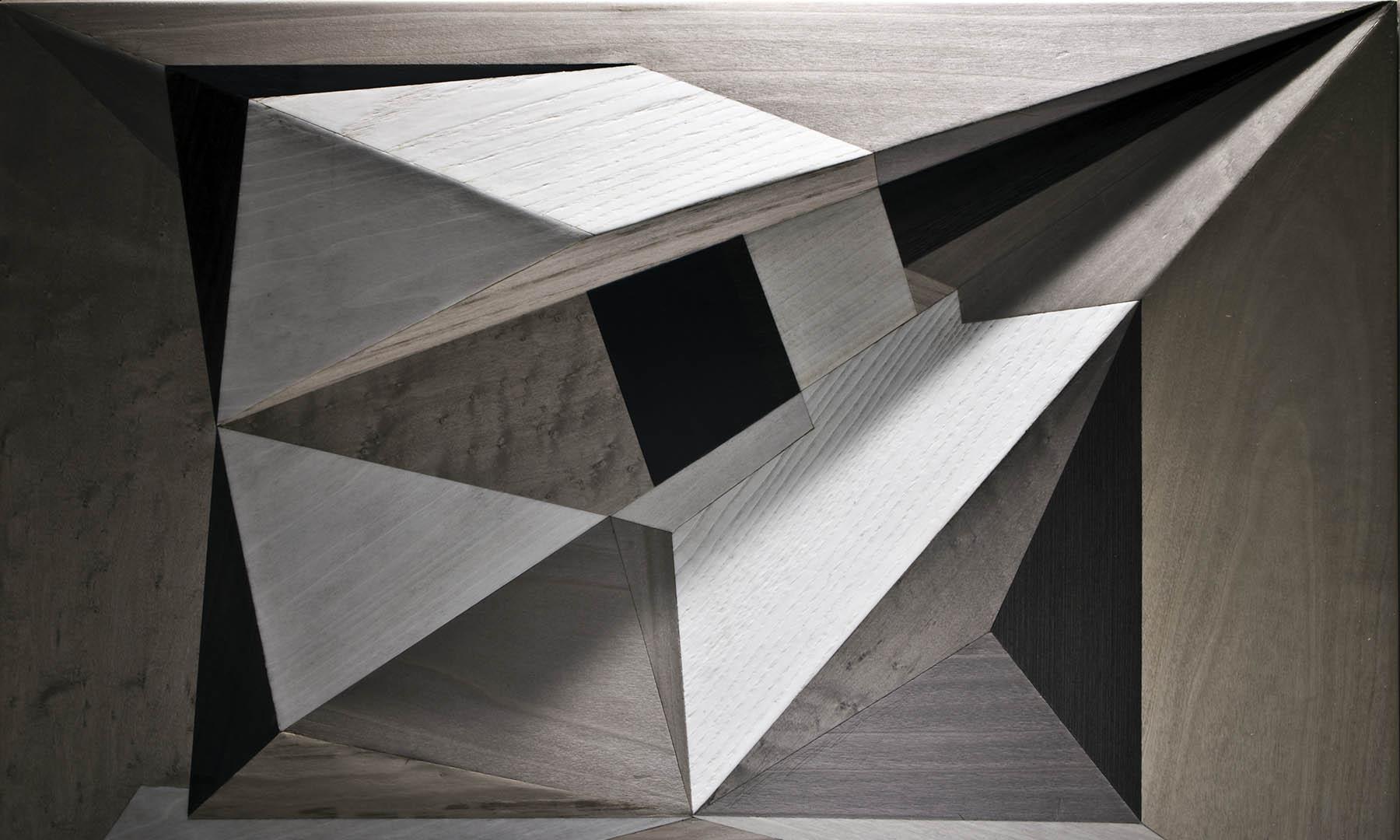

Limited edition sideboards that become true pieces of contemporary art
Important artists and designers, such as Aldo Rossi, Emilio Tadini, Bruno Gregori, Hsiao Chin, Robert and Trix Haussmann and Fausta Squatriti created paintings to be reproduced, using the inlay technique, on a sideboard characterized by essential lines. A mosaic created using various types of wood veneers that differ greatly from each other and are patiently matched to reproduce the original painting.
Intarsia Collection revives the local tradition of this ancient technique: a product designed to be reproduced only in numbered specimens, signed, and certified by the author and by the craftsman. The sideboards of the “Intarsia” Collection are design furniture turned into paintings. “Intarsia” represents a direct contact with raw materials which take shape through manual ability and scrupulous dedication, re-invented by imagination and direct experience with wood.


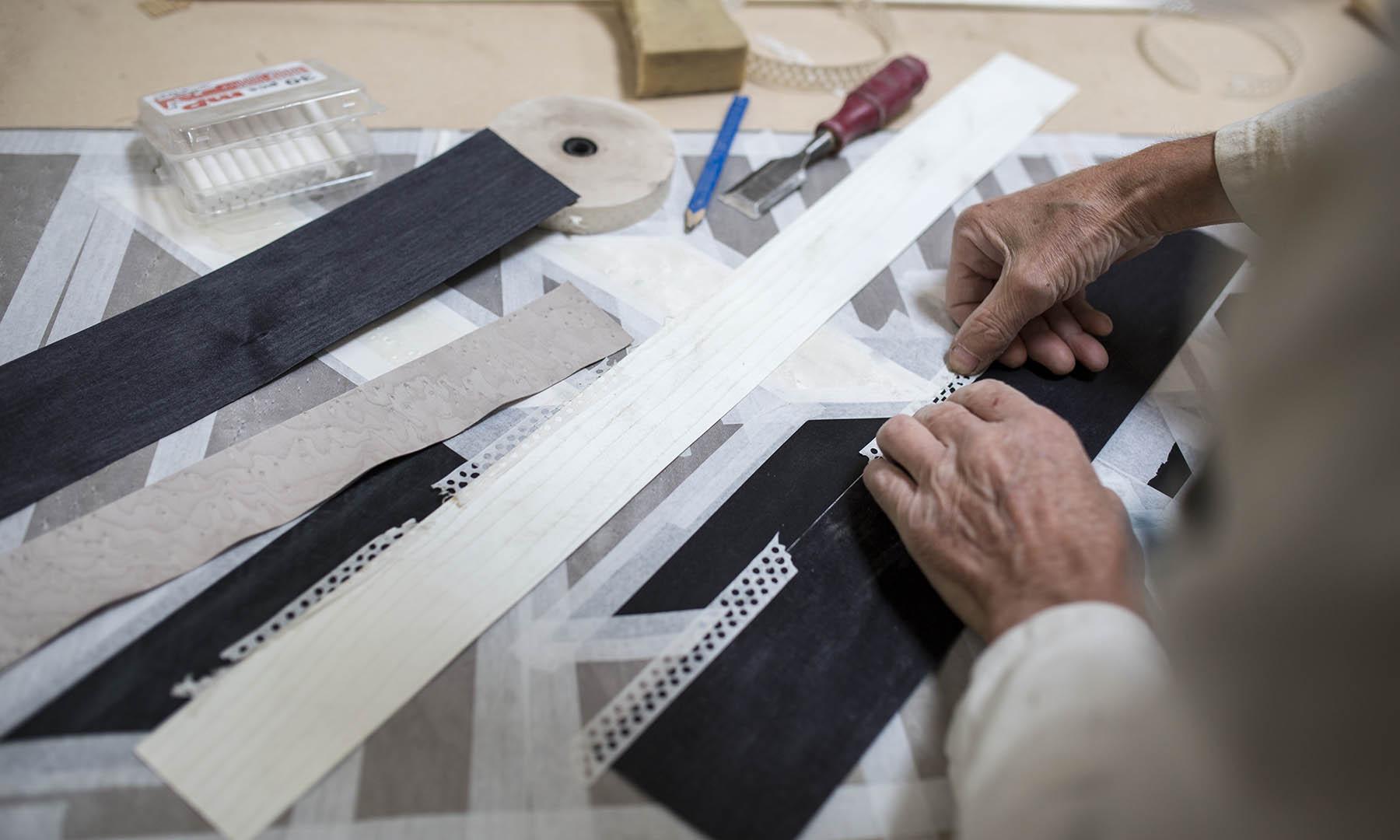

Intarsia technique: a modern expression of the antique art of inlay
Intarsia is a form of wood inlaying technique documented in Asia Minor from 600 B.C. and developed in Italy at the beginning of the Roman Empire and was referred to as “tarsia certosina”. The inlay technique achieved its maximum splendour during the Renaissance, when it was used for sacred and nobiliary artistic works. During the same period the geometric inlay procedure improved thus creating the art of pictorial and perspective effects in representations that were frequently multi-coloured, enriched by the design of shadows.
1462, that can be considered the year in which the “intarsio” was born, saw the realisation of the choir stall in the Basilica del Santo in Padua by the Lendinari. During years, the art of inlay moved to Piedmont and Lombardy, where one of the last great personalities emerged: that of Giuseppe Maggiolini who, by only using the natural colours of different types of wood, outlines a guideline that is still followed today.
Intarsia technique: a modern expression of the antique art of inlay
Intarsia is a form of wood inlaying technique documented in Asia Minor from 600 B.C. and developed in Italy at the beginning of the Roman Empire and was referred to as “tarsia certosina”. The inlay technique achieved its maximum splendour during the Renaissance, when it was used for sacred and nobiliary artistic works. During the same period the geometric inlay procedure improved thus creating the art of pictorial and perspective effects in representations that were frequently multi-coloured, enriched by the design of shadows.
1462, that can be considered the year in which the “intarsio” was born, saw the realisation of the choir stall in the Basilica del Santo in Padua by the Lendinari. During years, the art of inlay moved to Piedmont and Lombardy, where one of the last great personalities emerged: that of Giuseppe Maggiolini who, by only using the natural colours of different types of wood, outlines a guideline that is still followed today.


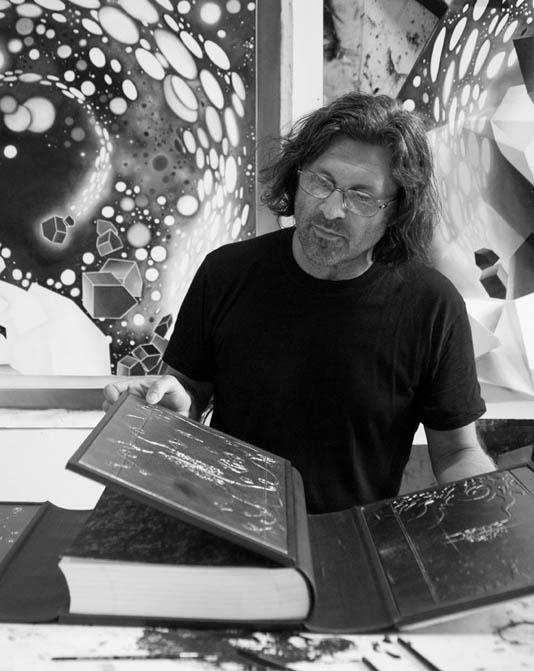
Marcello Jori
Marcello Jori was born in Merano in 1951. Renato Barilli will curate his first exhibition in 1977 at the Galleria de Foscherari in Bologna, starting a career that will see him among the protagonists of the eighties and nineties Italian art and nowadays making him the interpreter of a kind of art having very few equals in the panorama of the current artistic research.
He participates in three Venice Biennials and holds exhibitions in national and international museums and galleries. The latest solo exhibitions took place at the Marconi Foundation in Milan and at the Repetto Gallery in Lugano.
Marcello Jori today defines himself as a “Whole Artist”. As a writer, he publishes for Mondadori, as a designer, he works for the Alessi and Moroso companies.
Marcello Jori
Marcello Jori was born in Merano in 1951. Renato Barilli will curate his first exhibition in 1977 at the Galleria de Foscherari in Bologna, starting a career that will see him among the protagonists of the eighties and nineties Italian art and nowadays making him the interpreter of a kind of art having very few equals in the panorama of the current artistic research.
He participates in three Venice Biennials and holds exhibitions in national and international museums and galleries. The latest solo exhibitions took place at the Marconi Foundation in Milan and at the Repetto Gallery in Lugano.
Marcello Jori today defines himself as a “Whole Artist”. As a writer, he publishes for Mondadori, as a designer, he works for the Alessi and Moroso companies.



